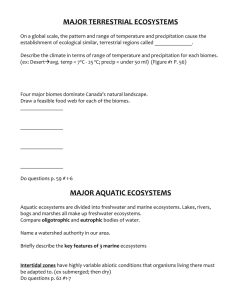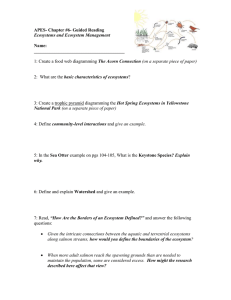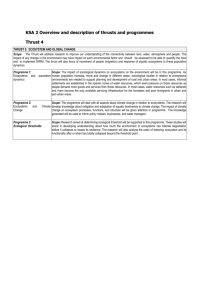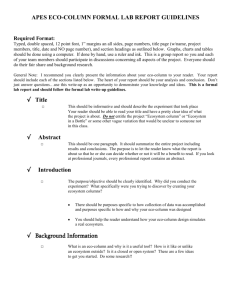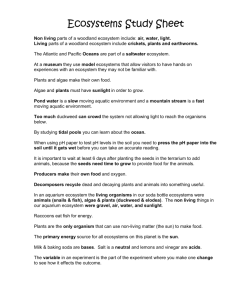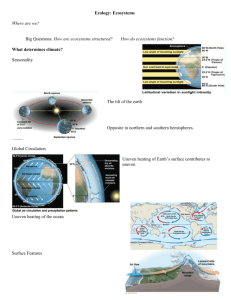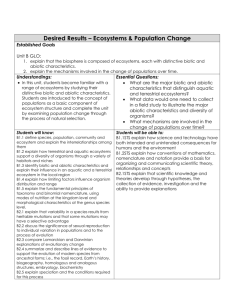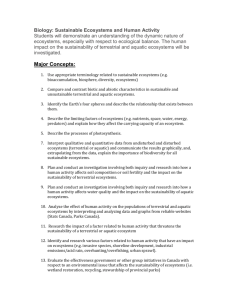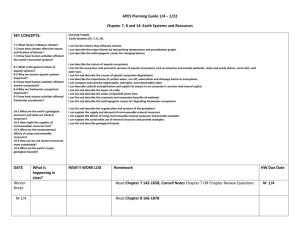ENVIRONMENTAL SCIENCE 20 Syllabus
advertisement
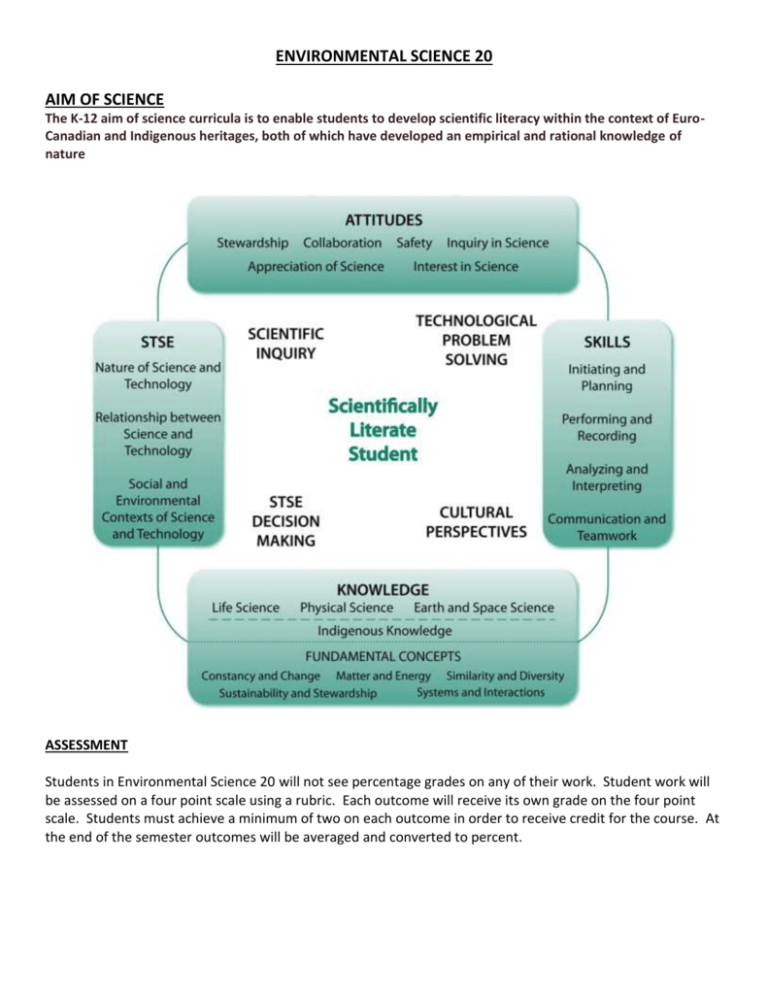
ENVIRONMENTAL SCIENCE 20 AIM OF SCIENCE The K-12 aim of science curricula is to enable students to develop scientific literacy within the context of EuroCanadian and Indigenous heritages, both of which have developed an empirical and rational knowledge of nature ASSESSMENT Students in Environmental Science 20 will not see percentage grades on any of their work. Student work will be assessed on a four point scale using a rubric. Each outcome will receive its own grade on the four point scale. Students must achieve a minimum of two on each outcome in order to receive credit for the course. At the end of the semester outcomes will be averaged and converted to percent. Below is the general Science rubric that students will be assessed upon. More specific rubrics will be provided with each unit. Mastery 4 Great work! This is going extra well for you! Independent 3 You did it and you did it on your own! Instructional 2 Good start. You are beginning to make sense of this on your own. Intervention 1 Spend some extra time with the criteria and ask for help. Environmental Science 20 Outcomes Career Exploration ES20-CE1: Analyze and explore environmental science related career paths in Saskatchewan, Canada, and the world. Independent Study ES20-IS1: Create a product that demonstrates a deeper understanding of a topic covered in the Environmental Sciences 20 course. What is Environmental Science? ES20-ES1: Understand the interdisciplinary nature, and applications of, environmental science. Climate Change ES20-CC1: Understand the meaning and implications of contemporary climate change on planetary systems. Terrestrial Ecosystems ES20-TE1: Examine the role plants play in an ecosystem as well as what and how humans use plants. ES20-TE2: Recognize the role of animals in ecosystems and the need for intact habitat in ecosystems to support animal populations. ES20-TE3: Understand soil as an integral component of terrestrial ecosystems. ES20-TE4: Apply knowledge of terrestrial ecosystems to environmental issues. Aquatic Ecosystems ES20-AE1: Recognize the processes that are part of a healthy functioning aquatic ecosystem. ES20-AE2: Investigate the structural and functional characteristics of an aquatic ecosystem emphasizing the interactions between its biotic and abiotic factors. ES20-AE3: Analyse the impacts of human-induced changes on aquatic ecosystems.



